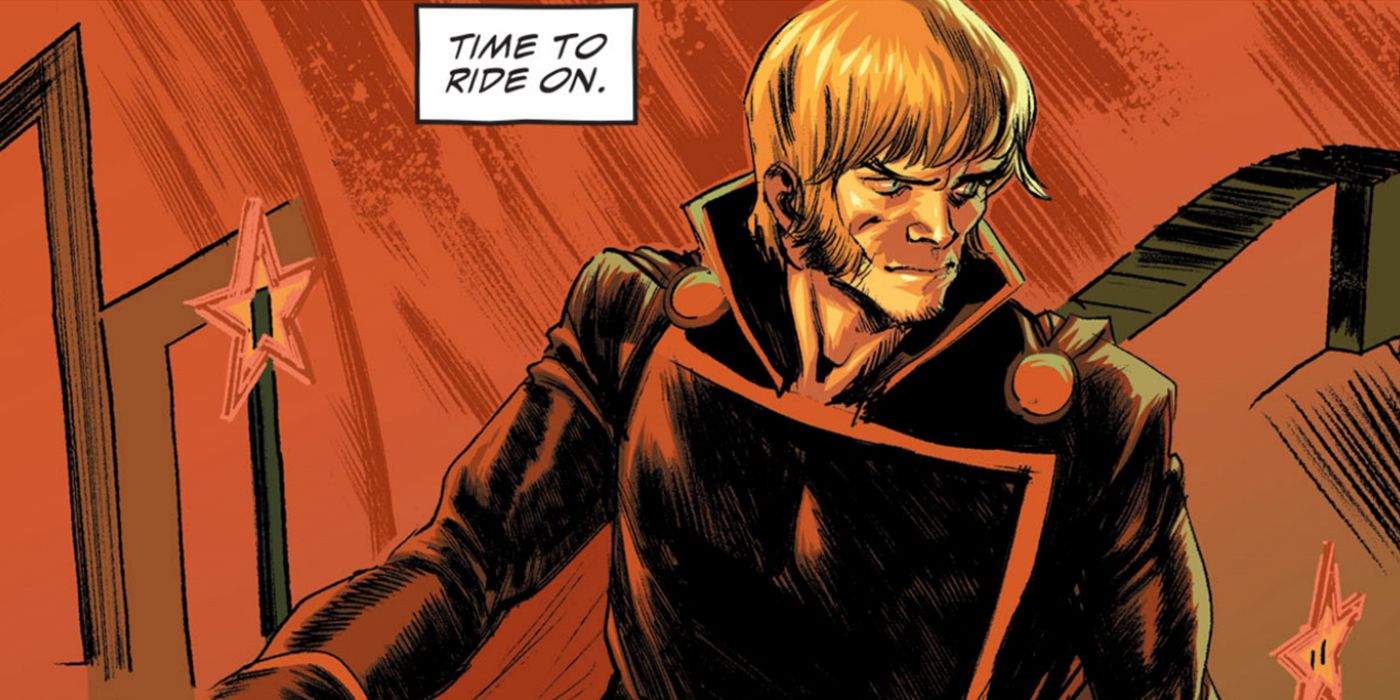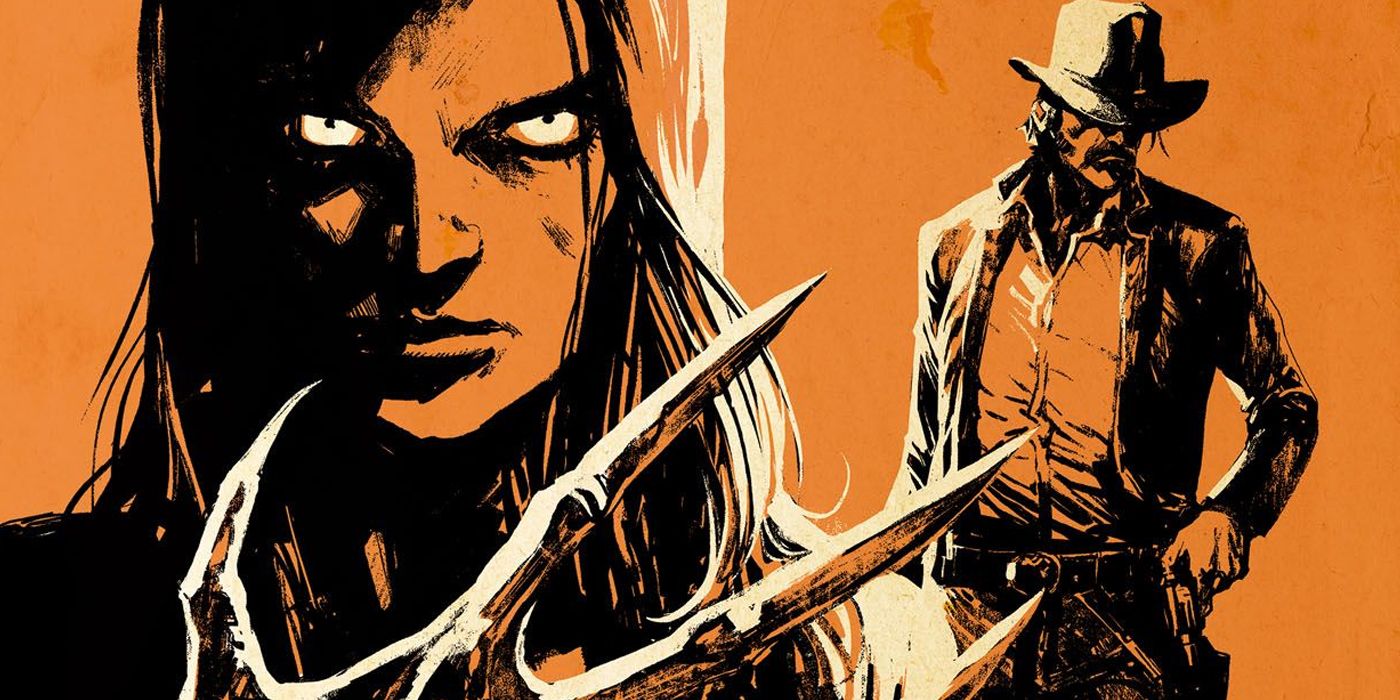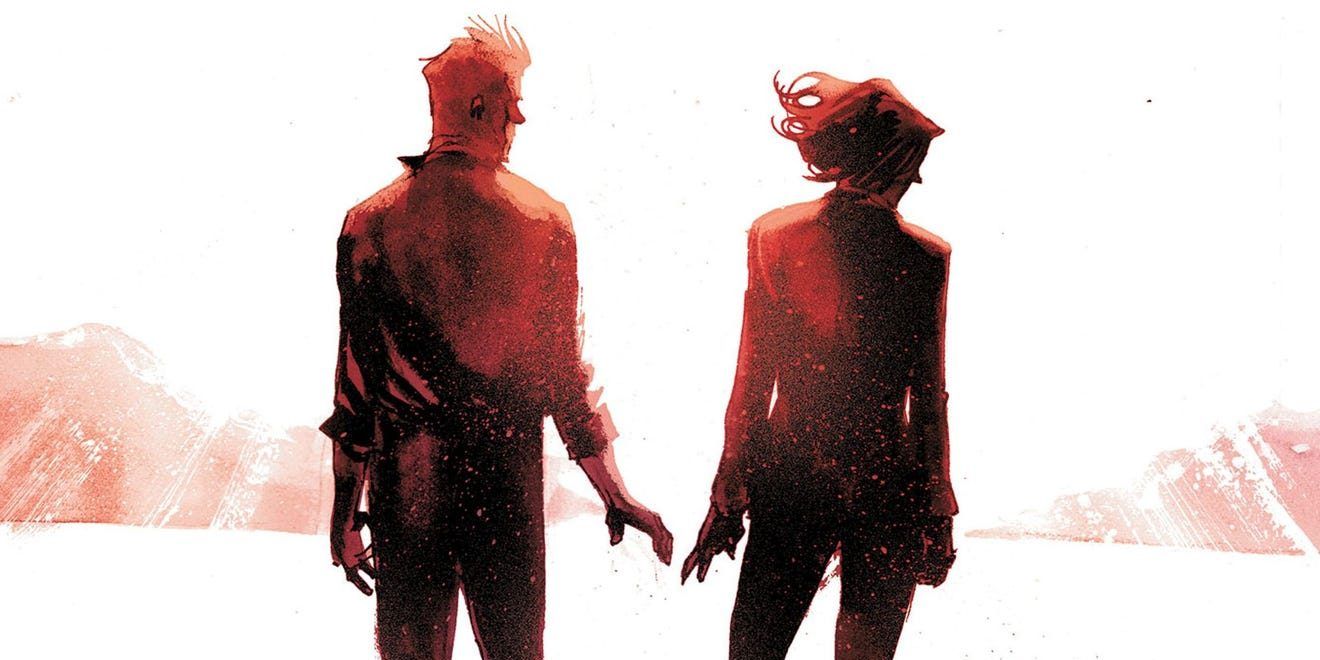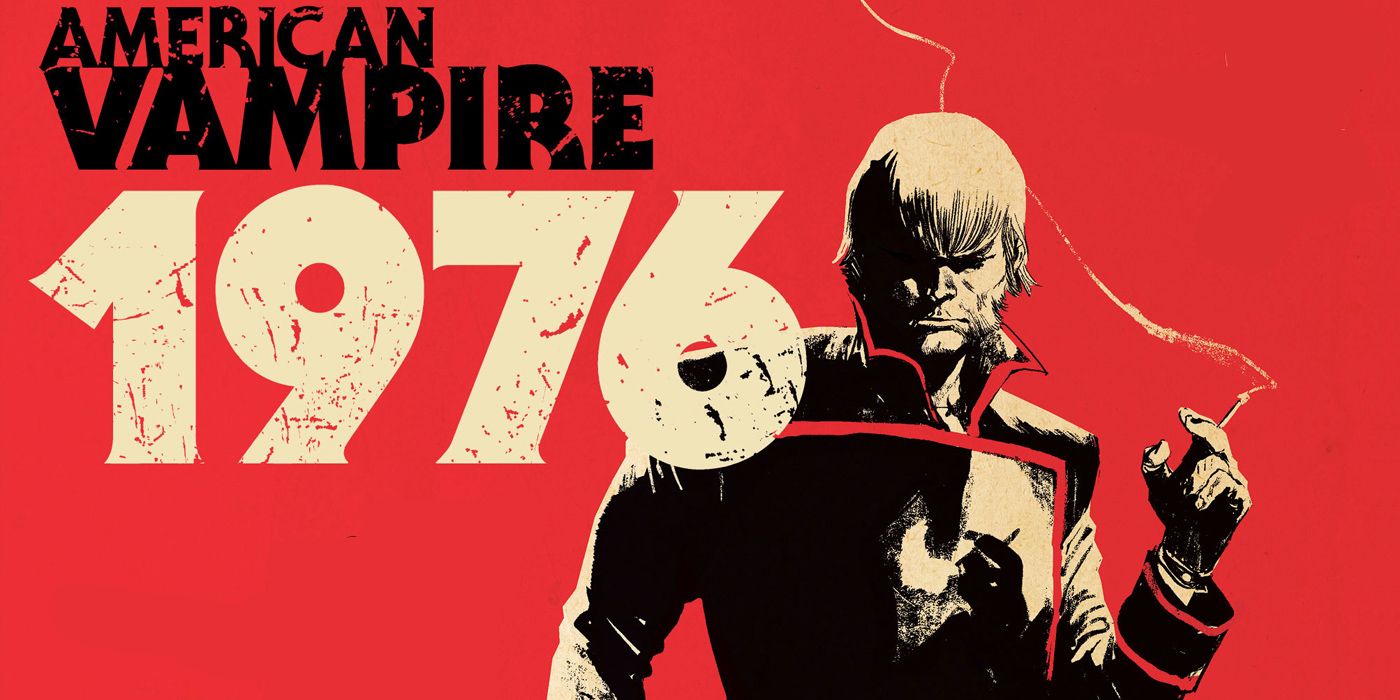Warning: The following article contains spoilers from American Vampire 1976, #1 by Scott Snyder, Rafael Albuquerque, Dave McCaig and Steve Wands, on sale now.
After four years away, the acclaimed horror comic book series American Vampire is back with its latest volume American Vampire 1976. Moving from its original home at Vertigo Comics to DC Comics' mature readers-oriented publishing label DC Black Label, the new title reunites the original creative team of writer Scott Snyder, artist Rafael Albuquerque, colorist Dave McCaig, letterer Steve Wands and editor Mark Doyle. The new volume has Skinner Sweet back human as an ancient vampiric threat rises as the United States prepares to celebrate the bicentennial anniversary of its founding.
In an exclusive interview with CBR, Snyder reveals how the horror series feels more timely than ever, how deeply personal the comic book's story is to him and his plans for its future beyond 1976.
RELATED: American Vampire 1976 Isn't the End of the Franchise's Comic Book Run
If the first volume of American Vampire was about introducing and expanding the mythology and American Vampire: Second Cycle was about going deeper into the characters while revealing this ancient evil, what is American Vampire 1976?
Scott Snyder: It's about bringing it all together. The funny thing is the story for 1976 is in the original pitch document from 10 years ago, so we were always going to end it in 1976 in terms of this one long story building its way to the present. I was born in the late '70s, so my feeling was it'd be fun if the series inhabited the decades that I didn't experience. I had fantasies about doing the series in the 80s, Miami Vice-style with Skinner and Pearl, but the '80s is done so much, and it's so close to home and the '70s has a really resonant air to it right now.
For me, I always planned on ending it then, because it's the bicentennial and has this weird, celebratory anxiety where 1976 is this great 200th anniversary of the country's formation and yet all these things are going wrong. The economy has tanked, Nixon was impeached, there was this fear of terrorism and our vulnerabilities to China, Russia and Iran -- all these things that are making us question our dominance and sense of self and place in the world.
It's just such a fascinating moment and as we got closer to now, especially in 2016 and 2017, it felt so appropriate because this is a moment when it feels like history can swing one way or another based on the vote or a judge; it's never been so malleable, so tenuous and mutable. American Vampire has always been about that, looking at history through the lens of monsters and the aspects of our national character that are heroic and villainous all through that strange prism. Looking at that moment in the '70s felt urgent, fun and resonant for the current volume.

All of your books feel personal, but it really feels like American Vampire is the closest to you. Do you find it cathartic or emotionally exhaustive to put yourself on the page when drawing from things like current events?
Snyder: It's funny because every series I work on is personal, but in really different ways. Wytches is really personal in the specific way of being at your absolute darkest about being parent, losing a parent and all those kind of familial terrors, whereas Metal and all that stuff is about the love of superheroes and why they matter so much and have mattered for so many years. So there's always a degree of the personal in everything I do. But, with American Vampire, it's the most me out of all the series; it has everything I love to write about: horror, history, mythology, it's soap opera-ish, there's high stakes, it's character-driven, it has Americana.
Out of everything that I do, it's my favorite, it's the most fun to come back to. I was really excited that everybody on the original team was free to do it this year. We were going to do it last year, this arc, but DC really wanted to do it for the tenth anniversary so we decided we'd make room in the schedule. But we're going strong, we're working on issue #6 right now so I'm excited.
How has it been bringing the band back together with Rafael Albuquerque, Dave McCaig on colors and Steve Wands on letters? How is your collaborative process with them now?
Snyder: It's amazing! We've seen each other through marriages and divorces and children. Rafael, I remember the first time he came to visit me in New York City. I didn't even have an issue done, and he was over from Brazil for our first New York Comic-Con. He was going to stay with my buddy Scott Tufts, who wrote Severed with me -- a book that we did at Image -- and I was going to stay at my parents' house. And I gave him Scott Tufts' address and he never showed up and I was freaking out because I thought he got off the plane and got lost in the city and at about 10:30, 11 at night I got a call from my parents saying they were having such a good time with my friend Rafael. He had gotten the addresses mixed up and he had gone to my parents' house instead and he wound up staying there and I ended up staying at Scott's for the whole time New York Comic-Con was going on. They liked him so much they bought a piece of art from him and have it in their kitchen still: It's a very quaint kitchen but they have a picture of Pearl ripping out someone's guts as a vampire.
Rafael and I visit each other; he's come to visit in the States, and I've gone to visit him and his family in Brazil. He's a brother, he's family, and I call to talk to him even when we're not working a project together. The same with Dave McCaig and same with Steve Wands; he's lettered a bunch of stuff for me. And there's also Mark Doyle -- who's leaving DC now -- he and his girlfriend at the time, now wife, Jeanine Schaefer who is now at BOOM! but was at Marvel, found me when I was doing a reading for a short story collection that was about superheroes. They asked me if I was a real comic fan and liked the stories, and I [told them I] had comics in my bag. I had just come from Forbidden Planet and they were like "Well, if you ever want to pitch..."
My whole career goes all the way back to these people and this book. I owe my whole career all of them and to come full circle and work with them now on this arc that's so poignant to me and so robust. It brings everybody back from Dracula, Gus, Travis, the Gray Trader, everybody's in this one, and it means the world and it was so effortless. When I was sitting down to this, I was afraid like "What if I go back and I've forgotten Skinner's voice and can't get back into it?" and I started and it was the easiest writing gig; I was like "I remember this, this is the best!"

All that creative muscle memory is still there.
Snyder: It feels energized too! I love this arc, I really do, and I think we all feel it working on it. I don't know when we're all going to get together again and do the book. We always had this plan to end it in 1976, but then take it to the present and, in the present, do these series with modular stories like B.P.R.D. for Hellboy through the V.M.S., our organization that hunts monsters. It'd be something along those lines where we do cases in the present starring the characters from the original series and those cases would be informed by or flashback to moments in history and modular stories that took place in the past itself in the lost history of the V.M.S. We want to return and come back to it -- it's like our home base -- but this will be the end of this long, cumulative kind of driving narrative we've been telling all along.
You mentioned the Gray Trader and Severed; the bad guy of that was the Salesman. What is it about these traveling salesmen archetypes and ancient, totemic evils that you find so engaging as a storyteller?
Snyder: I'm big fan of old folk music, and it feels like it's this recurring template: This guy you meet at the crossroads who makes a deal with you or has an instrument and plays a song that drags you down. There's this kind of very American interpretation of that you find in all kinds of blues music, country music and that myth about the devil at the crossroads is just so built into our cultural ideology, if not our religious ideology. I wanted to do something where that figure, that guy who knows you even though you don't know why he knows you, could pop out of the dirt anywhere.
The Gray Trader is meant to be the scariest villain in the series. He travels through tunnels underground and he's got armies down there where he sends the beast. He's become the right hand of this ancient evil and I love him, he's a lot of fun to write. Every character in the series is meant to play off different Americana and a blend of different American iconography: The Signalman, with the classic western cowboy sequined suit, and Pearl is obviously the Hollywood starlet from the 1920s. Everyone plays off these iconographies and the Gray Trader is meant to play off the devil at the crossroads in the series.

Previously, you ended with the revelation that Jim Book had indeed risen as a vampire, reversing his power dynamic with Skinner who had cost him so much in life. Why did you want to bring him back and what can you tease about his relationship with Skinner moving forward?
Snyder: With Jim Book, there was so much that I wanted to do with him over the years. His relationship to Skinner and the way they grew up together, to me, it has this primal, mythic quality to them like brothers: One goes bad, one goes good. And there was more planned for him, originally, when we were pitching the series, but we got so enamored with Pearl and wanting to move forward instead of dwelling on the past that we moved past it. But I wanted people to know that it was Jim Book at the end of issue #34 as we broke for the end of the first cycle and I worried it was too obvious because it's Abilena tending to some monster in the basement that she clearly brought back with some kind of ancient blood.
I hope people were surprised, because I was worried it was too telegraphed. But the reason I want to bring him back now is, for me, he was the one in the very beginning that was chasing Skinner and trying to get him to be good again. And now, at the end, I think he's sort of a perfect foil for Skinner as Skinner has to make some final choices about who he's going to be in this war because he's really the crux of it.
Pearl, to me, is the breakout star in a lot of ways but she knows who she is quite early in the series. The big revelation came for her is when she realized who she's been and should be but in a bigger way. Pearl didn't go to Hollywood to be a star, she went to become something bigger than herself; she says it openly in [the first arc]. She wants to be in a movie that inspires people, she wants to be in something bigger than she could have been otherwise, she has no interest in fame or any of that.
Skinner is the opposite: Skinner's all about the point of life and the American Dream is to be bigger and having your name in lights and having your legend be bigger than your life. She, I think now, realizes that her role is to be a small part of something much bigger but, in doing that, she leads the V.M.S. So she's got a very big role in a war that's tremendous whereas Skinner is in a place right now where all the things that he had hoped for himself: A legend in life, a legend in unlife, he can't do that with his mortality. This arc is really his big choice.
When we first see him here, he's at his lowest point being human again.
Snyder: Yeah, and he's made some really dark decisions to try to become immortal again, and all those really are laid to bear. I really wish we had more issues. I think they're giving us one special issue for a special one where I can do flashback stuff just for fun so I can give Rafael a bit of a breather after issue #5. My hope is we can do more because Jim and Pearl were partners for years at the V.M.S. and there's the whole story with Gus and how he was kidnapped under Travis' watch and he's down there with the Beast and all that.
So there's a lot of stuff I want to explore, especially with Jim Book, but I am very, very happy that we're able to do this final arc because, you can tell, Skinner and Pearl are not coming down to become enemies in some big way. They're fighting on the same side, it's just a matter if Skinner will come through and, with Jim Book, he's always been the one to be there and go "If you go bad again, I'm going to take you down." That kind of final shootout is something I always wanted to do with the finale to the series, but it has a big twist, a really big twist.

You co-developed the Jim Brook back-up stories in the first arc with Stephen King. Was there any talk of having him come back in any capacity?
Snyder: Yeah, I'd love him to! My hope is he'd come back to do something with us; he's always really responsive whenever I write him. But it was more a matter of wanting to make sure we did [the ending] our way rather than having him come in and do something because, as a finale, Rafael and I have made such a home of this series for ourselves that we didn't want to get somebody in and then force them to do something so the story all makes sense. The first time he did that, he was so excited that he moved past the constraints of the story, and it was fun to watch him do that. But here at the end, everything's interlocking a little bit so it'd be a little hard. But my hope is to get him back for one of those specials I was talking about, totally.
To close this out, what are you excited to bring with American Vampire 1976 to the readers?
Snyder: It really is our thank you arc. We've always done arcs that focus on one set of characters or another set of characters but this is everyone, it's the biggest arc we've ever done. It'll be 10 issues -- 10 if we get that special issue in the middle -- and it finds a way to bring every character in. It's our way to say thank you to everyone that's been with us for so long. It's always been the planned end for the series before it's reborn in a new format so, for us, I just hope they love it as much as we do. We're deeply proud of this one, it's been a long time in the making and planned for forever.
I remember exactly where I was when American Vampire was first accepted. I was standing outside the daycare waiting for our now 13-year old to come out and Mark Doyle called me -- because it had gotten rejected once -- and was like "I rewrote [the pitch] and it got accepted and we're going to do this thing." And I was tearing up because I got to be a comic book writer, it was such an amazing thing. And in that original document was this arc, pretty much to a tee. Some things are different, some characters we didn't have at the time, like Travis wasn't invented yet but, overall, it's pretty much what we have here so I'm really, really grateful for fans sticking with us for this long and letting us get to ending we wanted to get to.




